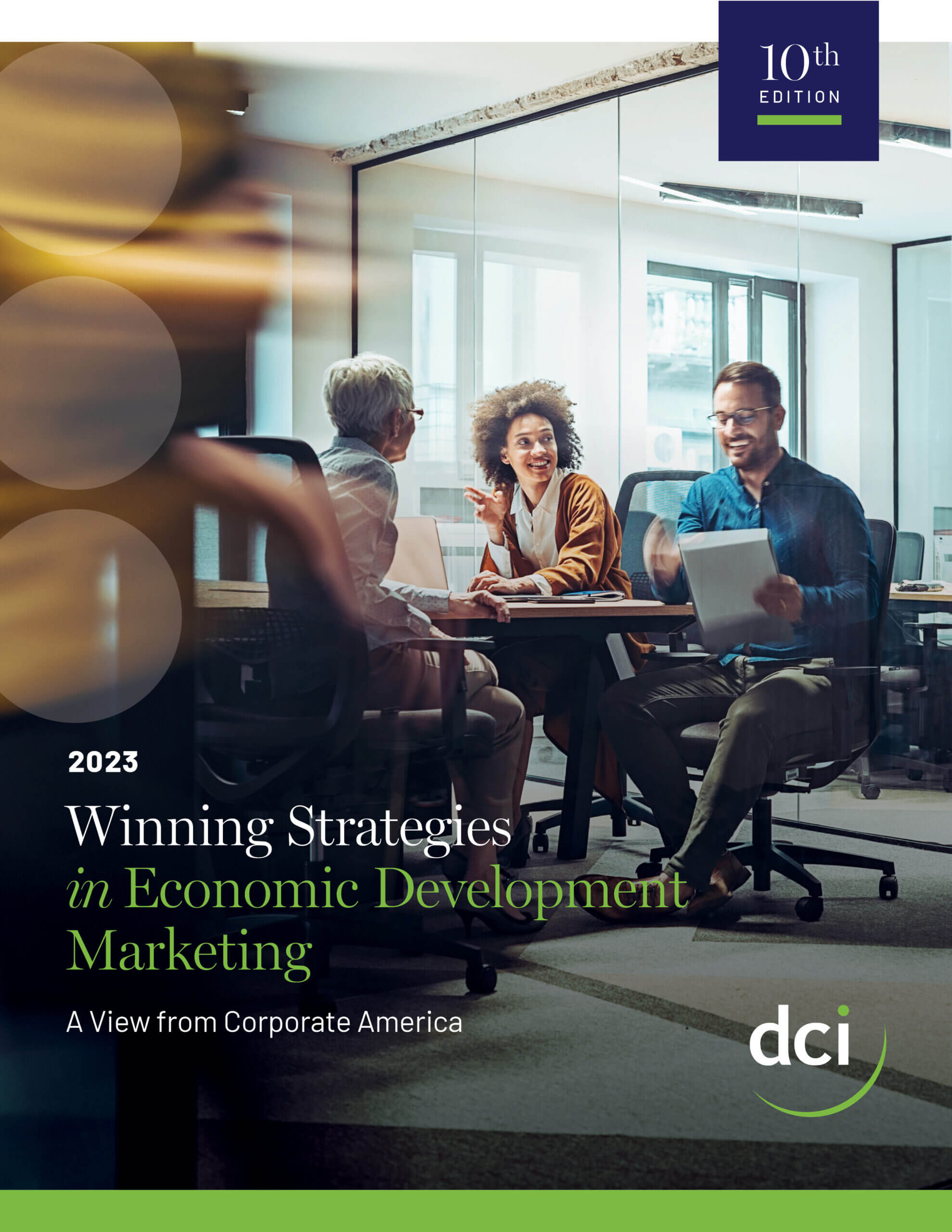Winning Strategies in Economic Development Marketing 2023

C-Suite and Site Selectors Offer Valuable Insights into Successful Economic Development Marketing Strategies
How are perceptions of place for corporate investment influenced? Which economic development organizations are leading the pack when it comes to marketing their locations? How will AI change the site selection process as we know it?
Now in its 10th edition, Winning Strategies in Economic Development Marketing answers these questions and more. The research continues to be a valued resource for economic developers to better understand what—and how—to market to C-suite executives with location decision-making responsibilities, as well as to their location advisors. Through the survey and analysis, DCI provides insights into current best practices in marketing places and how these practices have changed over time. It also sheds light on how current events are impacting location decisions.
When DCI last released this report in 2020, the world looked a lot different than it does just three years later. The country was in the midst of a global pandemic, a tumultuous presidential campaign was sweeping the nation and people were navigating a transition to a new phenomenon called “remote work.” Executives had to make strategic decisions as information changed daily.
